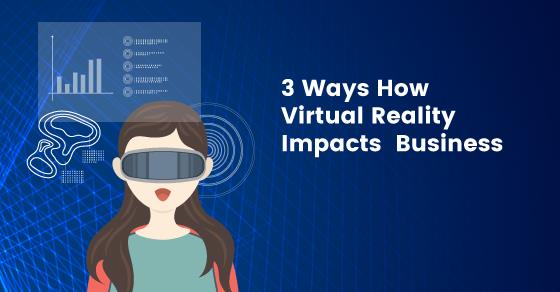"5 Ways To Boost Your eCommerce Sale With Social Media"
"Machine Learning Frameworks For Building More Intelligent Apps"

Beyond a fantasy come true, Virtual Reality has become a business tool which revolutionizes the habits of interaction in the different sector such as like retail, health etc. Virtual reality is transforming new markets, offers a growing number of impressive applications in the enterprise settings. Dramatically it is all set to hit the mainstream markets soon.
Apart from VR competence in different sectors like retail, health, tourism, training or transportation, there are many other potentials that could have a much greater impact on our daily lives. With this in mind, here are 3 great Virtual Reality use cases:
Virtual Reality revolutionize the future shopping concept through visualization. If your an enterprise manufactures and sell products, virtual reality can change your world drastically by enabling you to promote your brand and products absolutely in a new approach.
In the current scenario there are a number of big possibilities where VR shopping can deliver a huge advantage over the traditional online shopping experience, as it gives you the convenience of online shopping along with the in-store experience. ,
To increase sales, companies like Audi make use of the HTC Vive to present cars in showrooms, Ikea let customers design their own kitchens with an HTC Vive, eBay Australia teamed up with Myer to create the “first virtual reality department store, Amazon is also working on adding virtual reality shopping, and lot more.
Virtual reality doesn’t make a whole replica of your in-store shopping experience, but it’s getting there in a cheaper as well in the more convenient way: just that your customers need a smartphone and Google Cardboard set to experience it.
In spite of all the technical innovation, refining one’s expertise on real-life scenario eventually makes a professional competence. Not even a single organization can persevere without a well-trained team; it is a simple fact that nothing can beat the on-job experience how effective the training program is. And this is another sector where Virtual Reality ultimately shines out.
Virtual reality is gaining a lot of attention in many training scenarios for a long time as it confers a wide range of advantages for academia and industry alike at lower cost and reduced risk. Essentially VR based training provide a realistic 3D environment representation of what you are trying to convey or trying to instruct trainee via a specially designed audio-visual headset.
The key benefit of VR based training approach is that not only it can cut out distractions, but also completely engage the people in the simulated environment, just as in a real-life workplace scenario. In other words, despite gathering knowledge respective to their field, with VR trainees start practicing their skills right from day one.
As the amount data available is growingly complex, enterprises require a sophisticated interactive visualizations presentation on real-time data sets. In this respect, combining the endless possibilities of VR and the power of real-time visual analytics enables real-time data visualization with easier pattern recognition and more interactive data understanding. Unlike conventional data visualization pattern, virtual reality facilitates the enterprise to walk around and look at the data in a clearer perspective.
VR is really a peek into the future of big data and real-time analytics. The most obvious gain of VR is the speed at which issues being identified and addressed. VR also facilitates a view of real-time data analysis associated with malfunctioning assets and dispatch crews to respond to the asset failures. VR is intrinsically well-suited than traditional visualization technique to interact with the data for collaborative visual data exploration and data analytics.
VR is resulting in an efficient channel across various sectors by pushing the boundaries and leveraging businesses for streamlined workflow and enhanced decision-making. From medical to industrial applications VR allows interactions far more natural with virtual objects and also to experience the data through all senses - touch, sound, and even smell which means that there are yet there are many opportunities to explore.